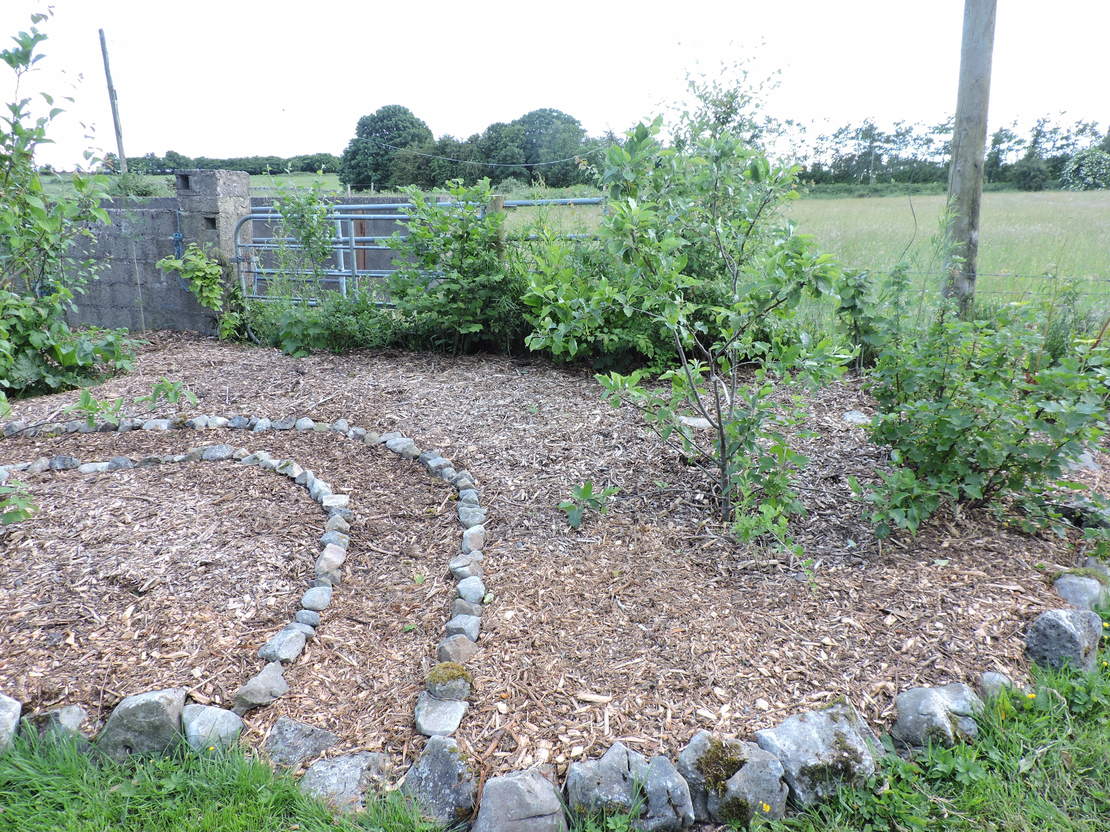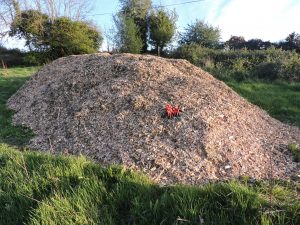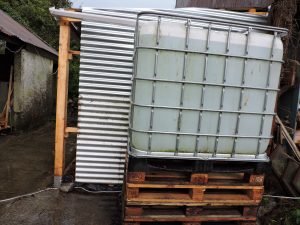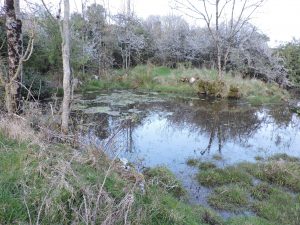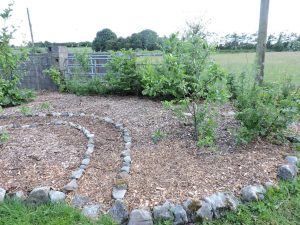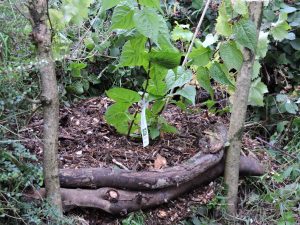Intro – Mulching (video below) and planting perennial plants, storing water in barrels, IBC tanks and ponds all help to keep your garden productive during the hot dry summer months instead of suffering or even losing plants. Although here in Ireland we have plenty of rain year around and never a shortage of water, last years 40 day drought was a bit of a wake up call for us all. Even mains water was becoming scarce in many parts of the country and was close from being turned off completely by the county councils to conserve water. Farmers had to supplement feed due to the grass in the fields drying out. Whilst our own gardens were absolutely thriving in the sunny warm conditions of June due to the way they are designed, we did lose a lot of plants stored in pots in our nursery. We simply couldn’t keep up with watering, some plants didn’t make it even though we managed to water them twice a day most days. We now mulch a lot of the large plants in pots and they only need half as much water. We would like to share some of the things that you can do to prepare your garden for a drought well in advance before the next one happens.
Mulch – Mulching all of your gardens growing spaces is the best way to stop your soil and therefore your plants from drying out during periods of drought. Mulching has many advantages. It acts like a sponge holding a substantial amount of water, it stops the sun from hitting the soil directly thus stopping it from drying it out and it blocks the suns UV rays from killing the microbial soil life. Also aiding long fertility and providing a diverse habitat for insects. We have a detailed Q&A ebook on mulching available to download for free in the subscriber section, simply subscribe here to get access.
Perennial Plants – In the spirit of reducing the need for watering and keeping maintenance to a minimum, perennial plants are the best option. These don’t require replanting every year and keep growing more extensive roots increasing their resilience. Deeper roots enable perennial plants to reach water held by lower soils. Mains rooted plants such as comfrey are good at this and are often used as a mineral accumulators.
Water storage – Collect rain water in barrels and IBC tanks from the roofs of your house and sheds. Although it’s not a major amount of water it can make all the difference when your garden is in need for a watering after a weeks drought. It may not be drinkable quality however rain water is excellent for your plants and it doesn’t contain chlorine like mains water which will damage your plants and soil life. It’s a lot of better than having to resort to using tap water, as this will only harm or stunt the plants due to the added fluoride and chlorine. A water barrel can hold around 200 liters. An IBC tank have a tap and can hold just over 1000 liters which makes them even better value. We use watering cans out of the barrels and attach a hose to an IBC tank raised off the ground. Thousands of liters may sound like a lot of water but you can see it depleted quickly especially if you have a lot of plants not protected by mulch or plants in pots. Even our chickens have drank about 15 liters per day in the summer, that’s half of a large IBC tank in a single month of drought.
Water source – Well – You can dig or drill a well. There is a good chance of establishing a permanent source for drinking quality water this way. Please consider testing the water after the well has been established and cleared. Although a well may not be a sufficient source for watering the garden, it is another way. We’re looking to cover our water needs from multiple angles as not to put too much pressure any one system of delivery. Please remember that even a well is finite.
Water source – Ponds – The biggest and probably the most permanent way to secure your water supply is to dig a pond. Geoff Lawton has some great video lectures on pond planning and construction. If designed well it can aid the garden in many ways along side of being a valuable backup source for water during a drought. Ponds are great for increasing biodiversity in your garden and you can even grow fish or edible water plants in them. A pond can create a microclimate benefiting the surrounding area, for example it holds heat from the sunlight and lets it off during the night moderating temperatures and keeping frost away extending the growing season. Also it reflects sunlight, hence we are going to plant fruit trees such as stone-fruit like peaches and cherries that would normally not do too well here in Ireland on the north side of the pond thus receiving up to twice as much sunlight helping to ripen and sweeten the fruit. More on ponds in a future post.
More Resources:

